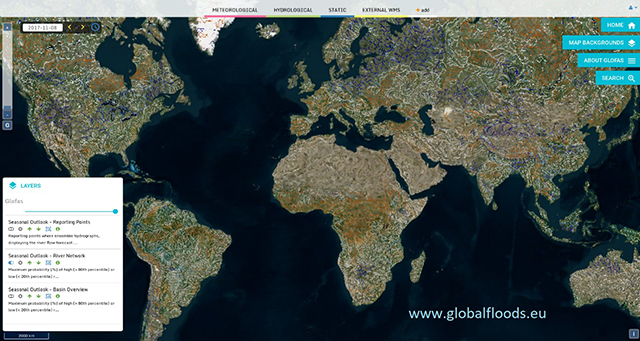How climate modelling predicts where to send humanitarian aid
Through long held working partnerships with a range of agencies, Dr Emerton and Dr Ficchi provided real-time emergency flood hazard reports to the UK’s Department for International Development (DFID, now the FCDO) and to aid agencies operating in Mozambique during Cyclones Idai and Kenneth. These were designed to help the humanitarian response to make informed decisions on high-risk areas, provide emergency shelters and move those imminently in danger.
Targeting flood aid
Cyclones Idai and Kenneth struck Mozambique in March and April 2019, claiming more than 1,000 lives and leaving hundreds of thousands of people homeless. DFID made an urgent request to the University to provide rapid assessments of upcoming flood risk after Cyclone Idai’s landfall, and again ahead of Cyclone Kenneth. Our researchers interpreted data from GloFAS (the Copernicus Emergency Management Service Global Flood Awareness System), a state-of-the-art flood forecasting system, to provide up-to-the-minute emergency briefings. The reports made a critical contribution to help governments and NGOs put humanitarian aid in the places where it was needed most, and inform action plans (e.g. pre-positioning aid workers, setting up shelters, moving people to safer areas).
Combined Science
Our researchers in the Water@Reading hydrology research group have been working in partnership with ECMWF and the European Commission for several years to contribute to GloFAS development, analysing forecasts in order to improve the system. Under SHEAR (Science for Humanitarian Emergencies & Resilience), an interdisciplinary research programme launched in 2016 and funded by DFID alongside the Natural Environment Research Council, our researchers are investigating how such forecasts can be used to take early humanitarian action. Two ongoing SHEAR projects informed the emergency reports.
FATHUM (Forecasts for Anticipatory Humanitarian Action), led by Dr Liz Stephens (part of the Water@Reading group), works with local stakeholders to identify early warnings that can be used to kick-start humanitarian activities before a disaster strikes, through a mechanism known as Forecast-based Financing. FATHUM research provides critical evidence and expertise to scale-up Forecast-based Financing beyond local pilot projects, to national and international levels. FATHUM contributed analysis to help disaster managers in Mozambique, Uganda (in 2016 and 2017) and elsewhere (e.g. Bangladesh in 2017) take action before flooding began.
In addition, researchers on the PICSEA (Predicting Impacts of Cyclones in South East Africa) project, led by Dr Nicholas Klingaman at the National Centre for Atmospheric Science (part of the University), are investigating the accuracy of cyclone forecasts in the region, collaborating with FATHUM, alongside national forecasting agencies in south-east Africa, to provide analysis of meteorological forecasts of cyclone-related hazards. This combined meteorological and hydrological expertise was of vital importance in producing the DFID reports.
Fast facts
- Combining research and expertise across projects generates real-time forecasts
- These forecasts provide up to date information for decision making
- Early warnings can be used to get aid to and people away from emergency areas
Further information
Emerton, R. E., Stephens, E. M. and Cloke, H. L. (2019) What is the most useful approach for forecasting hydrological extremes during El Niño? Environmental Research Communications, 1 (3). ISSN 2515-762. https://doi.org/10.1088/2515-7620/ab114e
Ficchi, A. and Stephens, L. (2019) Climate variability alters flood timing across Africa. Geophysical Research Letters. ISSN 0094-8276 doi: https://doi.org/10.1029/2019GL081988
Wainwright, C. M., Hirons, L. C, Klingaman, N. P., Allan, R. P. and Turner, A. G. (2019) The impact of air-sea coupling and ocean biases on the seasonal cycle of southern West African precipitation Climate Dynamics in press ISSN 0930-7575, doi: https://doi.org/10.1007/s00382-019-04973-0
For more information, please contact: Dr Rebecca Emerton or Dr Andre Ficci:
rebecca.emerton@reading.ac.uk a.ficchi@reading.ac.uk
Acknowledgements and credits:
GloFAS was jointly developed by the ECMWF.
The SHEAR programme was jointly funded for five years by (DFID and the Natural Environmental Research Council (NERC). FATHUM is a project on the SHEAR programme.
PICSEA was funded for two years by NERC.

